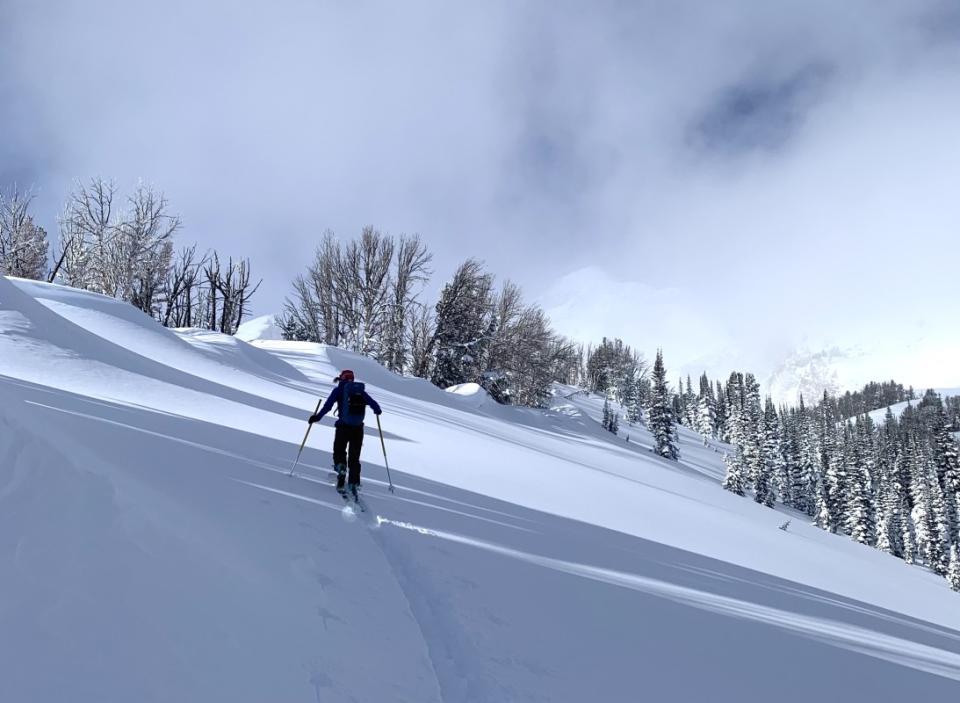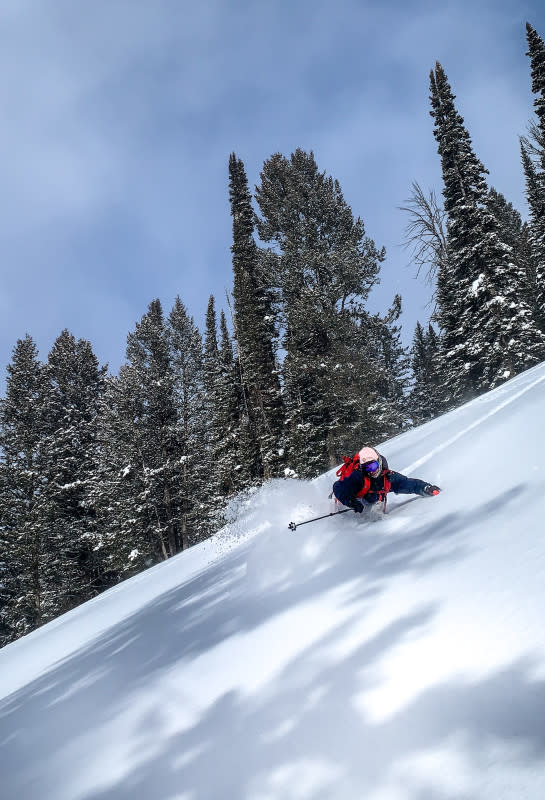Bucket List Trips: The Low-Angle Pow Noodling Setup
Powder aims to feature only the best products and services. If you buy something via one of our links, we may earn a commission.
NOTE: We all have a bucket list of ski trips, but prepping for your next big adventure can seem pretty overwhelming when it comes to choosing what to bring. I’ve been fortunate enough to travel the world for the last decade with skis in tow, and have learned a thing or two worth sharing about what kind of gear to bring to maximize the fun and minimize the stress. It’s worth noting that my recommendations are independent, come from learning from my own mistakes, and highlight things I’m truly excited about. This series is aimed at the generalist skier who’s interested in it all - powder, freeriding, some hiking and touring, the occasional shit-your-pants steep skiing moment, and most of all, adventure!
Check out the rest of our Bucket List Trips Guides here.
Low angle pow. It’s, like, the opposite of Chamonix extreme skiing. It’s also what most of us spend most of the season skiing in the backcountry, especially if we live anywhere with season-long persistent slab avalanche problems and healthy amounts of snow. Like Utah, Wyoming, or Idaho. Colorado too, if you’re lucky. If I look back at the days that avalanche problems led me to stick to low angle terrain over the past years, especially on deep days, they add up quickly, and it’s always been fun! The key? Find a setup that makes skiing low angle deep snow a blast.
I’ll keep this guide a bit shorter than the rest, because it really comes down to finding a proper pair of skis, boots, and bindings. For me, it’s all about finding a compromise between float, weight, and a jibby shape that allows me treat low angle pow like a terrain park. These are the days where I’ll walk uphill for hours, probably break trail a ton, and noodle my way through trees, low angle meadows, and maybe find a few windlips, small cliffs, or other airs to jib. I’m not charging, instead I’m in it for the soul turns and spending the day with friends laughing, hooting and hollering about how silly a sport this can be.
Skis: Something fat, light, and fun.
There’s a lot of different powder skis out there, and lots of them aren’t particularly fun unless you're going a million miles an hour in rowdy terrain. For days where avalanche danger is keeping you to terrain that you might otherwise write off, it’s really helpful to have a ski that excels at all speeds, particularly the slow ones, and can stay on top of really deep snow, no matter what. That means a fat waist width, a healthy dose of tip and tail rocker (or even just full-on reverse camber), and a short turning radius. That combination grants maneuverability in bottomless conditions even at slow speeds allowing you to slash, pivot and smear through the three-dimensional medium that is deep pow.
Admittedly, this has been a bit of a unicorn to find, but a few of my favorites over the last few years have been the reverse camber WNDR Alpine Reason 120, the Line Pescado, or Armada’s ARV 116 JJ UL, which all check most of those boxes. There’s a few skis from years past that also really fit the bill here like the beige Black Crows Anima Freebird or, hot take, the original K2 Pontoons.
Bindings: Ultralight tech bindings without the bells and whistles.
Staying with the theme of keepin’ ‘er mellow, pairing a huge ski like these with an ultralight binding will keep your legs fresh and ready to go lap after lap. There’s not much a reason to lug something heavy around - you don’t need the elasticity and bells and whistles of a heavy touring binding on days where you’re skiing bottomless pow. The forces you’re putting through your skis and legs aren’t anywhere near what you’d generate charging through crud or resort pow. Also, I wouldn’t worry about ripping a binding like this out of a ski, that’s more likely to happen with ultralight skimo toothpicks without a metal plate underfoot. The simpler, the better. You won’t need brakes, a bunch of adjustability, or any of the bells and whistles of heavier more complex bindings. You’re trying to ski pow, remember?

Photo: Max Ritter
Great options are the ATK Trofeo (available in various release values), the Black Diamond Helio 200 LT, the Plum Race 170 (also available in various RVs), or the Dynafit Mezzalama.
Boots: Something light and comfortable with a generous walk mode.
I’m not normally a huge proponent of ultralight two-buckle touring boots, but this is the kind of day where I actually think they perform well within their envelope. I find myself liking to really drive into a boot so I’ll normally take all the stiffness and damping in a boot that I can get. However, on days where it’s about chilling and stopping to smell the flowers, I’ll go all-in on comfort and a boot built around its walk mode.
You’ll be surprised at how little it takes to drive a big ski in really deep fluffy snow, especially in mellow terrain. It’s really fun to ski a little more centered, noodle around and get playful with things - and it doesn’t take nearly as much boot as we all think to make that happen.

Photo: Max Ritter
These types of boots are notoriously hard to fit, largely due to the lack of material and really thin liners they all come with. If you’re in the market, taking the time to try some different ones on your feet will go a long way. As always, consult a knowledgeable bootfitter if you have any doubts.
Some great options are the Dynafit TLT X or Blacklight, the Tecnica Zero G Peak, the Scarpa F1 LT, Dalbello Quantum Evo, or Fischer Travers CS.
A few extra things you might want to think about carrying on a day like this:
Days where I’m intentionally keeping it mellow are usually days where the conditions won’t allow me to step out into bigger, more exciting terrain. That means staying extra vigilant in the mountains and maybe being a little extra careful when it comes to general tour planning and safety. Deep snow, while REALLY fun to play in, can be really dangerous and make getting out really hard if things go wrong. I’ll definitely make sure to carry some extra food, water, and packable insulated layers (puffy pants!) on a day like this, and likely even carry a more substantial emergency shelter like a RAB bothy bag or a guide rescue sled/tarp system.

